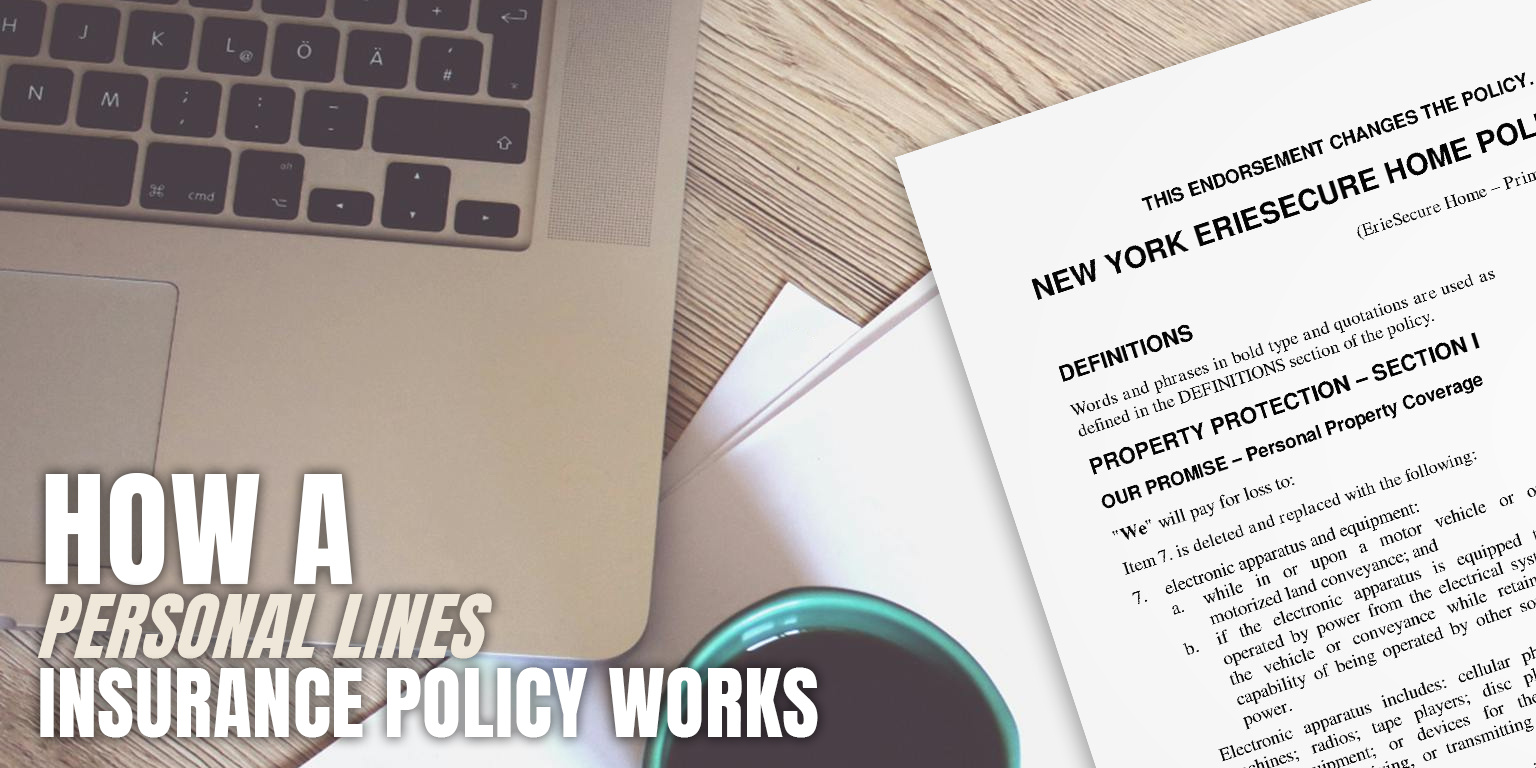What Happens to Your Renters Insurance When Moving Between CNY Apartments
October 29th, 2025
5 min read

You've found a new apartment in Baldwinsville and signed the lease. Your current Liverpool apartment lease ends in three weeks, giving you time to coordinate the move. Your renters insurance covers your current address, but you're uncertain when to update it, whether coverage continues during the move, and what happens to belongings in storage between apartments.
At the Horan insurance agency, we work with Central New York renters to clarify how coverage functions during apartment transitions. We collaborate with several carriers to help renters explore options that address coverage gaps during relocation.
In this article, we'll examine when to notify your carrier about address changes, how coverage works during the moving process, what happens with storage units, and how your new location affects premium costs.
When to Contact Your Carrier About Your Upcoming Move
Your renters insurance policy ties to your physical address, not just your name. When you move from one Central New York apartment to another, carriers can handle the change through an endorsement to your existing policy or by issuing a new policy. The endorsement adjusts the covered location and premium.
 However, to avoid coverage gaps, most agents recommend establishing a new policy for the new address with a specific start date, then canceling the old policy once you've moved out. This approach ensures continuous coverage at both locations during the transition without timing complications.
However, to avoid coverage gaps, most agents recommend establishing a new policy for the new address with a specific start date, then canceling the old policy once you've moved out. This approach ensures continuous coverage at both locations during the transition without timing complications.
Contact your carrier two to four weeks before your move-in date. This provides time to
- Get a quote for the new address,
- Review any coverage adjustments needed, and
- Schedule coverage to start on your move-in date.
Don't wait until moving day to handle this. If you notify your carrier the day you move and damage occurs that evening, you may face coverage questions. Starting coverage for the new address on your official move-in date documented in your lease ensures clear coverage.
For example, if you're moving from Cicero to Camillus on November 15th, contact your carrier by late October. Get the new coverage established to start November 15th, then schedule your old policy to cancel November 15th or the end of your old lease, whichever comes later.
How Coverage Works for Belongings During the Moving Process
Most renters insurance policies cover your belongings during the moving process for theft, vandalism, and weather-related damage. If someone breaks into the moving truck overnight in a Syracuse parking lot and steals items, or a storm damages boxes left outside briefly during the move, your policy typically provides coverage.
However, renters insurance generally doesn't cover damage that occurs during the physical moving process itself. If you drop a television while carrying it down stairs, or furniture gets scratched while loading the truck, standard renters policies exclude this damage.
This distinction matters in Central New York where many renters handle their own moves. When you rent a U-Haul for your move from Manlius to Fayetteville, your renters policy won't cover damage you cause to belongings while packing, loading, carrying, or unpacking.
Moving companies provide their own liability coverage, which federal law requires for interstate moves. For moves within New York, most companies offer similar safeguards. This coverage operates separately from your renters insurance and follows different rules.
Basic carrier liability pays 60 cents per pound for damaged items, while full value coverage costs extra but covers replacement value.
What Happens with Storage Units Between Apartments
Many Central New York renters use storage units during apartment transitions—particularly when lease dates don't align perfectly or when downsizing temporarily. Understanding how your renters insurance addresses stored belongings helps avoid coverage gaps.

New York renters insurance policies typically cover belongings in storage units up to 10% of your personal property coverage limit. If your policy provides $50,000 in personal property coverage, you generally have up to $5,000 coverage for items in storage, minus your deductible.
This 10% limit applies whether you're storing belongings temporarily during a move or long-term. If you're moving from a three-bedroom house in Liverpool to a one-bedroom apartment in Syracuse and storing furniture for six months, that same sublimit applies throughout the storage period.
Note that, while the 10% figure is common, especially in New York, some insurers may offer different terms or a flat dollar amount, so it’s always important to check your specific policy.
Coverage duration for stored items during moves varies by carrier and policy language. Contact your insurance agent to confirm how long your carrier covers belongings in temporary storage during a move. Some policies specify 30 or 60 days of temporary storage during relocation, while others don't impose time limits as long as you maintain an active policy.
The storage facility itself may offer or require insurance. This operates separately from your renters policy and may provide different coverage amounts or terms. Review what your renters policy provides before purchasing storage facility insurance to avoid paying for duplicate coverage.
How Your New Address Affects Your Insurance Premium
Your premium likely will change when you move to a different Central New York address. Several factors determine whether your rate increases or decreases:
- Crime rates in your new neighborhood affect property theft risk. Moving from a higher-crime area to a lower-crime neighborhood may reduce your premium. The opposite increases it.
- Building features influence rates. Apartments with security systems, gated access, or monitored entry cost less to insure than buildings without these features.
- Claims history for the location matters. If the building or complex where you're moving has experienced frequent losses, carriers may charge higher premiums.
- Distance to fire stations affects rates. Properties farther from fire protection services may cost more to insure.
For example, moving from downtown Syracuse to Skaneateles might reduce your premium due to lower crime rates and different risk factors. Moving from Cortland to a high-rise apartment building in downtown Syracuse with security features might also reduce costs despite the urban location.
Your carrier provides a new quote when you request coverage for the new address. Review this carefully before committing to the new policy, as significant rate changes may influence your decisions about coverage limits or deductibles.
What Happens When You Move Out Before Your Lease Ends
Sometimes renters move out before their lease officially ends—perhaps starting a new job in another city while still responsible for the current apartment's rent. Your renters insurance handles this situation through its liability coverage, which helps protect you regardless of location.
Even after you've moved all your belongings to your new Fulton apartment, your liability coverage at your old Onondaga address continues until you cancel the policy. This helps protect you if someone gets injured entering your old unit while you're still legally the tenant. But it's wise to contact your agent or carrier to confirm coverage will continue even though you're not actively residing there.
However, once all your belongings leave the old apartment, you may not need the personal property coverage there. Contact your carrier to discuss whether adjusting coverage makes sense. Some carriers allow you to maintain liability-only coverage at the old address while establishing full coverage at the new address.
If you're paying rent at two addresses simultaneously—common when lease dates don't align—you need coverage at both locations during the overlap period. This typically means maintaining your old policy until the old lease ends while starting a new policy for the new address when you take possession.
Understanding Certificate of Insurance Requirements in CNY Buildings
Some Central New York apartment buildings—particularly newer complexes and buildings with elevator access—require a Certificate of Insurance before you move in. This document proves you carry renters insurance meeting the building's requirements.
Your insurance carrier provides this certificate at no charge. Request it when setting up your policy for the new address, allowing several days for processing. The certificate typically includes your policy number, coverage amounts, effective dates, and the landlord's name as additional insured if required.
In some New York buildings, if you hire professional movers, the building management may require your moving company to provide their own Certificate of Insurance. This helps protect the building from damage caused during the moving process.
Coordinate with both your building management and moving company about any required certificates before moving day.
Failing to provide required certificates can delay your move-in date. Some buildings won't release keys or provide elevator access for moving without proper insurance documentation.
Planning Insurance Continuity During Your Central New York Apartment Move
Moving between Central New York apartments creates temporary complexity for your renters insurance. Understanding when to notify carriers, how coverage functions during relocation, and what happens with storage and temporary housing helps you maintain coverage throughout the transition.
The Horan insurance agency works with Central New York renters to discuss coverage options during apartment moves. We can explain carrier-specific policies about moving coverage and help you explore options that prevent coverage gaps.
Click the Get a Quote button below to learn more about maintaining renters insurance coverage during your Central New York apartment transition.
Daniel is an accomplished content creator. He has been working in publishing for almost two decades. Horan Companies hired Daniel as its content manager in November 2022. The agency entrusted its messaging to him. Since then, Daniel has written insurance articles, service pages, PDF guides, and more. All in an effort to educate CNY readers. He's helping them understand the world of insurance so they can make informed decisions.
Topics:



















